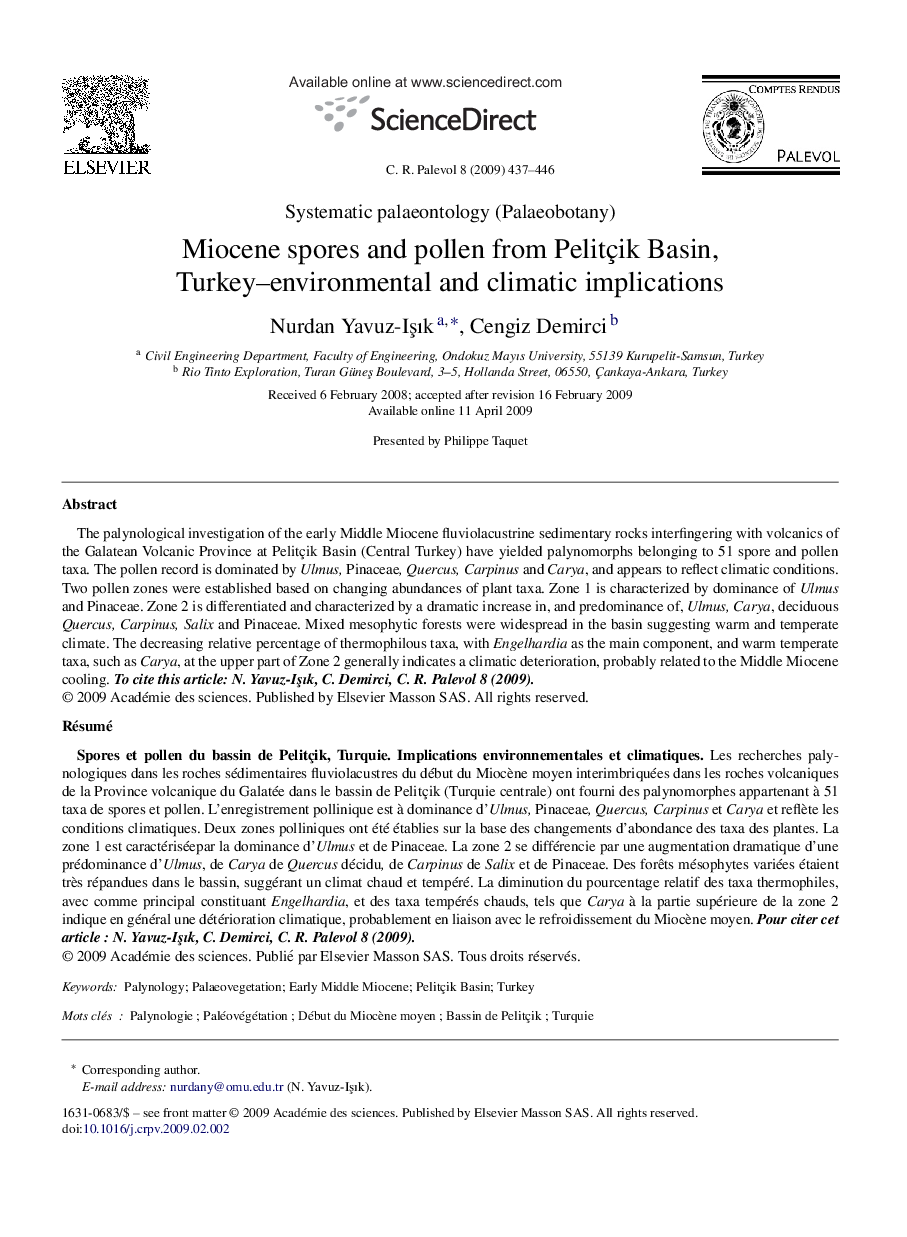| کد مقاله | کد نشریه | سال انتشار | مقاله انگلیسی | نسخه تمام متن |
|---|---|---|---|---|
| 4746255 | 1359817 | 2009 | 10 صفحه PDF | دانلود رایگان |

The palynological investigation of the early Middle Miocene fluviolacustrine sedimentary rocks interfingering with volcanics of the Galatean Volcanic Province at Pelitçik Basin (Central Turkey) have yielded palynomorphs belonging to 51 spore and pollen taxa. The pollen record is dominated by Ulmus, Pinaceae, Quercus, Carpinus and Carya, and appears to reflect climatic conditions. Two pollen zones were established based on changing abundances of plant taxa. Zone 1 is characterized by dominance of Ulmus and Pinaceae. Zone 2 is differentiated and characterized by a dramatic increase in, and predominance of, Ulmus, Carya, deciduous Quercus, Carpinus, Salix and Pinaceae. Mixed mesophytic forests were widespread in the basin suggesting warm and temperate climate. The decreasing relative percentage of thermophilous taxa, with Engelhardia as the main component, and warm temperate taxa, such as Carya, at the upper part of Zone 2 generally indicates a climatic deterioration, probably related to the Middle Miocene cooling.
RésuméLes recherches palynologiques dans les roches sédimentaires fluviolacustres du début du Miocène moyen interimbriquées dans les roches volcaniques de la Province volcanique du Galatée dans le bassin de Pelitçik (Turquie centrale) ont fourni des palynomorphes appartenant à 51 taxa de spores et pollen. L’enregistrement pollinique est à dominance d’Ulmus, Pinaceae, Quercus, Carpinus et Carya et reflète les conditions climatiques. Deux zones polliniques ont été établies sur la base des changements d’abondance des taxa des plantes. La zone 1 est caractériséepar la dominance d’Ulmus et de Pinaceae. La zone 2 se différencie par une augmentation dramatique d’une prédominance d’Ulmus, de Carya de Quercus décidu, de Carpinus de Salix et de Pinaceae. Des forêts mésophytes variées étaient très répandues dans le bassin, suggérant un climat chaud et tempéré. La diminution du pourcentage relatif des taxa thermophiles, avec comme principal constituant Engelhardia, et des taxa tempérés chauds, tels que Carya à la partie supérieure de la zone 2 indique en général une détérioration climatique, probablement en liaison avec le refroidissement du Miocène moyen.
Journal: Comptes Rendus Palevol - Volume 8, Issue 5, July 2009, Pages 437–446